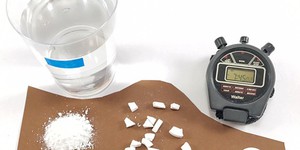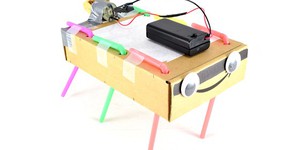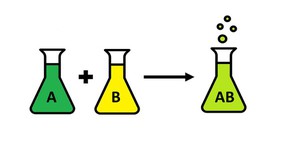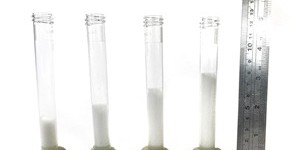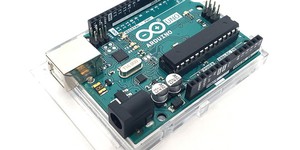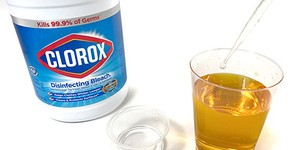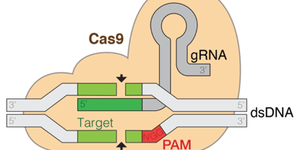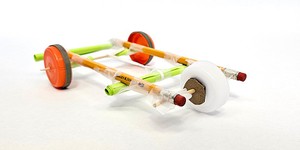Twelfth Grade Lesson Plans (60 results)
Science Buddies' twelfth grade science projects are the perfect way for twelfth grade students to have fun exploring science, technology, engineering, and math (STEM). Our twelfth grade projects are written and tested by scientists and are specifically created for use by students in the twelfth grade. Students can choose to follow the science experiment as written or put their own spin on the project.
For a personalized list of science projects, twelfth graders can use the Science Buddies Topic Selection Wizard. The wizard asks students to respond to a series of simple statements and then uses their answers to recommend age-appropriate projects that fit their interests.
Let us help you find a science project that fits your interests, with our Topic Selection Wizard.|
Select a resource
Sort by
|
Lesson Plan
Grade: 9th-12th
3 reviews
How does surface area affect the speed of a chemical reaction? Let your students find out in this sizzling lesson plan! In this project, they will explore this correlation by crushing Alka-Seltzer® tablets into different sized particles and measuring how long it takes for them to dissolve in water.
Read more
NGSS Performance Expectations:
Featured
Lesson Plan
Grade: 6th-8th
7 reviews
Junkbots are easy-to-build robots that you can make using a simple circuit and some recyclable materials. In this lesson, your students will learn about engineering design as they compete to build the fastest robot. No previous robotics experience is required!
Read more
NGSS Performance Expectations:
Lesson Plan
Grade: 9th-12th
7 reviews
This lab discusses types of reactions and replaces traditional reaction experiments involving chemicals such as lead (II) nitrate, barium chloride, and silver nitrate with greener alternatives. This lab is designed to challenge students to identify types of chemical reactions and distinguish between those that use safer, less hazardous chemicals and those that are more dangerous. Students will make a choice as to which reaction they will perform using the 12 Principles of Green Chemistry. They…
Read more
Lesson Plan
Grade: 6th-12th
2 reviews
Each student will get the chance to identify their own uniquely interesting STEM careers by tapping into the insights of the
Career Discovery Tool.
Remote learning adaptation: This lesson plan can be conducted remotely. During the Engage section, students can "order" their favorite ice cream using a poll on video chat. During the Explore section, students can access the Career Discovery Tool remotely as long as they have a device and access to the Internet. They can complete the Explore…
Read more
Lesson Plan
Grade: 9th-12th
1 review
In this lesson, students will employ the enzymatic decomposition reaction of hydrogen peroxide to investigate how chemical reactions are affected by enzymes and different substrate concentrations. Students will be challenged to control the rate of the reaction by adjusting the amount of substrate and thus changing the catalase activity. Foam production, created by the enzymatic breakdown of hydrogen peroxide into water and oxygen, will function as a proxy for the reaction rate. Based on their…
Read more
NGSS Performance Expectations:
Lesson Plan
Grade: 6th-12th
Create a two-part system for filtering greywater. Teams will focus on communication and systems engineering as they build separate components to filter solid and liquid waste and then combine them into one device.
Learning Objectives
Students will:
Consider the potential effects of drought and how greywater could be part of the solution.
Design a system for filtering out solid waste or liquid waste.
Consider effective communication strategies with their team.
Collaborate on their design…
Read more
Lesson Plan
Grade: 6th-12th
7 reviews
This lesson plan will introduce your students to physical computing: the process of building circuits and programming a microcontroller (an Arduino UNO®) to interact with them. The lesson is broken into seven activities that will walk your students through the basics of setting up the Arduino and interacting with circuit parts like LEDs, buttons, and resistors. This introductory material will help prepare your students for more advanced Arduino projects.
Read more
Lesson Plan
Grade: 9th-12th
7 reviews
Teach your students how temperature affects chemical reaction rates in this highly visual experiment! Students will investigate color change during the reaction of food color with bleach, and measure the reaction times for different reaction temperatures.
Read more
NGSS Performance Expectations:
Lesson Plan
Grade: 6th-12th
5 reviews
In this lesson plan, students will take a closer look at the most recent developments in gene editing. Specifically, they will learn about the CRISPR technology using various interactive simulations and other resources. Based on their gained knowledge, students will create a model of the CRISPR-Cas9 components and create a stop-motion animation video of the molecular mechanism of CRISPR-Cas9.
Remote learning adaptation:
This lesson plan can be conducted remotely. Students can work…
Read more
NGSS Performance Expectations:
Lesson Plan
Grade: 4th-12th
By conducting their own survey of an outdoor environment, students will examine a method for assessing litter, identify how humans impact the environment, and design solutions for preventing marine debris.
Read more
NGSS Performance Expectations:
Lesson Plan
Grade: 9th-12th
7 reviews
In this fun engineering lesson plan, your students will build rubber band-powered cars using readily available craft supplies. The challenge is to build a car that goes as far as possible while making careful use of materials.
Elementary school and
middle school versions of this lesson plan are also available. You can enter your students' designs in the 2024 Science Buddies Engineering Challenge for a chance to win a cash prize for your school.
Read more
NGSS Performance Expectations:
|
Explore Our Science Videos
Why Do Apples and Bananas Turn Brown? - STEM activity
Video Game Demonstration
Dancing Candy Hearts

